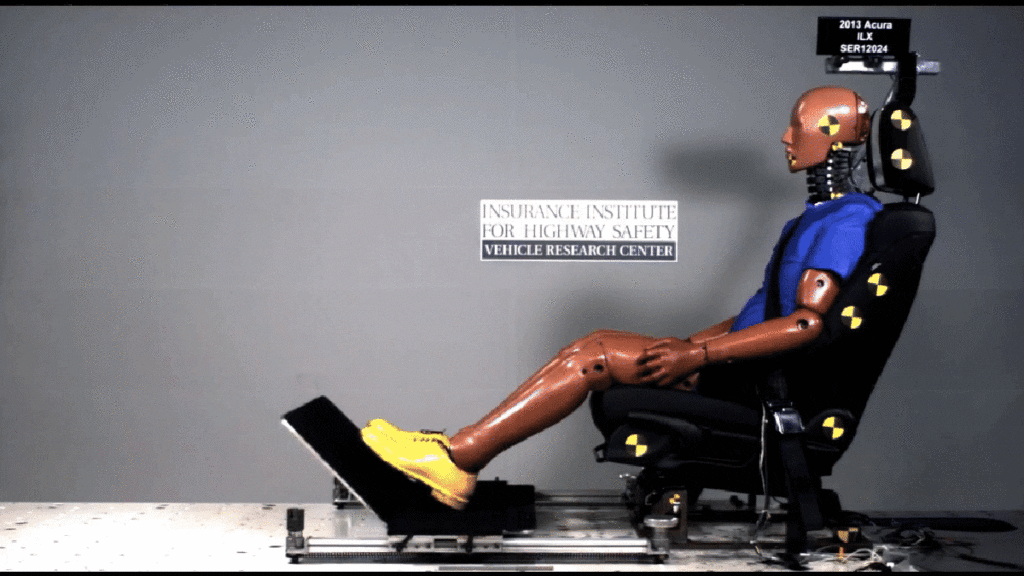Headrests Don't Just Keep You Comfortable, They Keep You Safe

In a video shared to Twitter today, the Insurance Institute for Highway Safety (IIHS) clarifies the importance of a properly adjusted car seat head restraint. Though we colloquially refer to them as headrests, they are more accurately called head restraints, and they are designed to protect your head if you get in an accident, not necessarily for maximum comfort. In order for the restraint to work properly and keep you as safe as possible, you need to have it properly adjusted, something many drivers don’t do.
Cup Series Driver David Ragan On ABB NASCAR’s EV Prototype
Rear-end collisions are the most common type of car crash on American roads, and the neck injuries they cause account for up to 83 percent of reported injuries in U.S. auto insurance claims, according to a study published in the National Library of Medicine. A properly adjusted head restraint may prevent neck sprains and strains as well as more serious spinal injuries, but some people flip their head restraints around or remove them all together for the sake of comfort. Head restraints are designed by manufacturers to provide maximum whiplash protection while minimizing discomfort, but every human body is different, so some people struggle to find a comfortable head restraint position.
People with long hair often cite the discomfort caused by head restraints when wearing a ponytail or hair clip, but removing or flipping around a head restraint may cause serious, otherwise easily preventable injuries. Some people even recommend against wearing plastic claw clips on the back of your head while driving, since they can cause additional trauma in the event of a rear-end collision. Regardless of your hairstyle, properly adjusted head restraints are proven to reduce injuries in accidents. According to the IIHS,
When a vehicle is struck in the rear and pushed forward, occupants’ torsos move forward with their seats. If a person’s head isn’t supported by a head restraint, the head lags behind the torso, and the differential motion causes the neck to bend and stretch. The higher the torso acceleration, the more sudden the motion, the higher the forces on the neck, and the more likely a neck injury is to occur.
The key to reducing whiplash injury risk is to move the head and torso together. To accomplish this, the geometry of a head restraint has to be adequate — high enough and near the back of the head. Then the seat structure and stiffness must be designed to work in concert with the head restraint to support an occupant’s neck and head, accelerating them with the torso as the vehicle is pushed forward. That’s why good head restraints are so important.”
It’s important to have head restraints properly adjusted to allow them to work as intended. To properly set your vehicle’s adjustable head restraint, raise it up so that the top of the head restraint is even with the top of your head. If you’re a tall freak like me and the top of the head restraint won’t reach the top of your head, just raise it to its highest position. If you’re on the shorter side, no adjustment may be necessary. To minimize the distance from the back of your head to the head restraint, it may be necessary to adjust the seat’s recline angle, and some head restraints are able to be adjusted fore and aft in addition to up and down.



